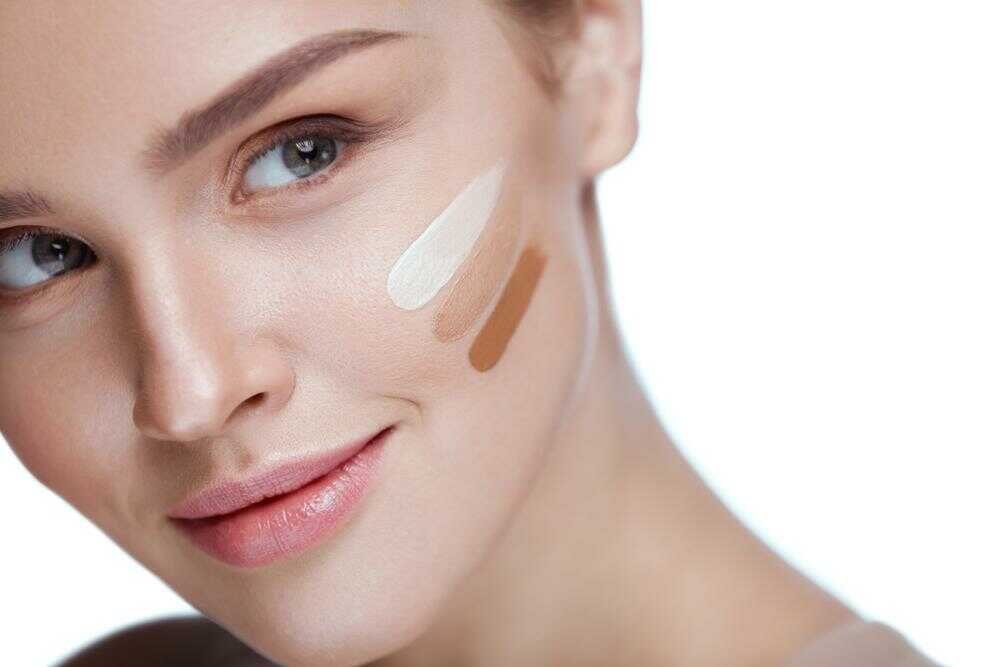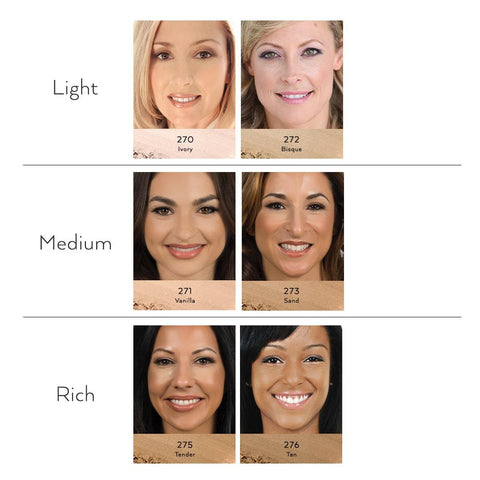
Foundation Guide: Never Choose the Wrong Shade Ever Again!
Foundation shade: we know it’s been said, but we’ll say it again:
We’re home more, these days.
And while it can make the use of makeup feel less necessary, it’s actually the perfect time to experience beauty just for yourself.
Because we all could use more self-care!
And enjoying your own beauty can mean trying a new look, experimenting with formulas, or using makeup as a way to break the daily at-home hum-drum.
But we’ll admit it: there are still some things you just can’t do at home.
For one, trying a foundation shade before buying it.
And when you feel like all you can do is guess online, this can make buying any new foundation feel like a risk.
Luckily, we’ve got just the thing for you!
Today, we have the foolproof guide to finding your perfect foundation shade—from the comfort of your home.
And it’s so easy and reliable, it might just become your go-to strategy for good!
Your Skin Type

You may be thinking: texture? I thought we were choosing a shade!
But here’s the thing: when it comes to finding the perfect foundation, the texture is just as crucial as the shade.
You see, it won’t matter how perfectly coordinated your foundation is if the formula gives you the wrong kind of coverage or finish. That’s why companies nowadays offer so many different types of formulas: to cater to all the different types of skin!
If your skin is more on the oily side, it’s generally best to stick with a formula that will absorb excess moisture. A powdered formula, like our Flawless Matte Foundation, will keep oil in check throughout the day with the help of high-impact minerals, while rosemary and grape seed extract help promote balance.
If you have normal or dry skin, on the other hand, a liquid formula, like our Hydrawear Plus will give you that flawless coverage you want without giving you that “dusty” finish.
Determining Your Undertone
Now, onto shades, for real this time.
When you choose your shade, two factors will be taken into account: skin tone and undertone.
Skin tone is, quite simply, the general area in which your skin falls on the spectrum, which brands typically refer to as light, medium, and deep or rich. And most people know their skin tone with just a quick look. Undertone, however, isn’t quite as obvious.
Undertone, however, isn’t quite as obvious.
Undertones refer to the degree of cool and warm-toned pigments in your skin, and can be either cool, warm, or neutral.
You may already have a good idea what undertone you are. For instance, you might’ve noticed you look stunning in gold jewelry, while silver just looks...off. Or maybe you can rock a magenta top, but that peach bridesmaid dress hasn’t seen the light of day since your cousin’s wedding.
And this is all because of undertone!
Still confused? We’ve got you!
Your undertone is something you can determine all on your own at home.
One of the most tried and tested methods is one we already mentioned: jewelry pairing. Try holding up some gold jewelry to your skin, then some silver. If gold has you glowing, you’re probably a warm undertone. If the silver makes your skin pop, you’re a cool undertone.
Another method is grabbing something fuschia—whether it’s a scarf, a hat, or even a lipstick, and compare it to something else in a vibrant orange or coral. If the fuchsia looks best, it means it’s complementing the bluish-pink tones of your cool undertone. But if that orange is really doing something special, it’s loving the olive in your warm tone!

And if you’re wondering: what if I look incredible in everything?
One: you’re lucky and we’re jealous. Two: you just might be a neutral undertone, meaning you have an equal balance of both pigments.
Checking the color of the veins around your wrists can determine your undertone. Greenish veins indicate a warm undertone. If they’re true blue, you’re cool.
The Selfie/Swatch Test
Comparing a photo of your skin to online swatches ensures an accurate shade match.
But let’s be clear: the days of forearm swatch tests are over!
Using your arm as a shade reference can be quite unreliable, and here’s why:
The skin on your arms probably doesn’t match the skin on your face.
The difference in shade between our arms and faces is due to varying levels of sun exposure.
And even your entire body does happen to be one singular even shade, you won’t get an accurate read without the right lighting.
Comparing your arm to swatches on a screen in a dark room distorts your skin's true shade.
So what’s one to do?
Take a selfie in some good old fashioned natural light!
Wait for a clear day, and take a selfie with no makeup (but don’t skip the sunscreen) and use this as a reference when you choose from the swatch line-up.
And important tip: don’t take the selfie in the late afternoon or evening.
Sunlight in the later part of the day, or “golden hour,” is going to have a significantly warmer, more orangey tone to it, and while it’ll make your skin look gorgeous in photos, it’s not going to be very helpful for finding your shade.






